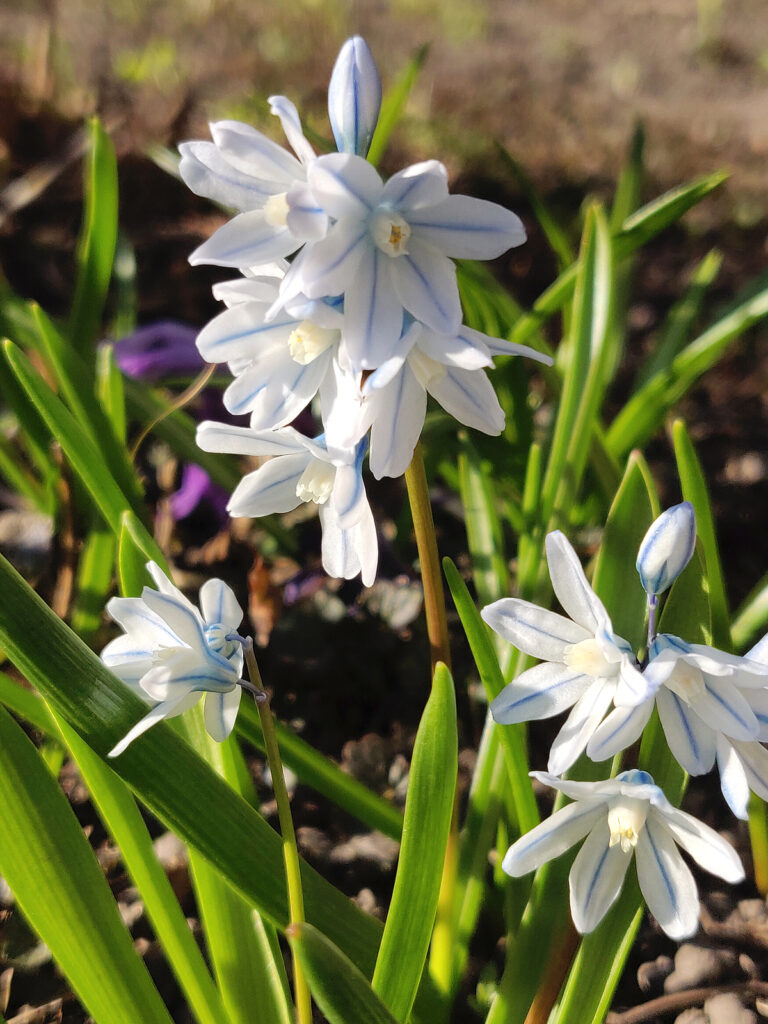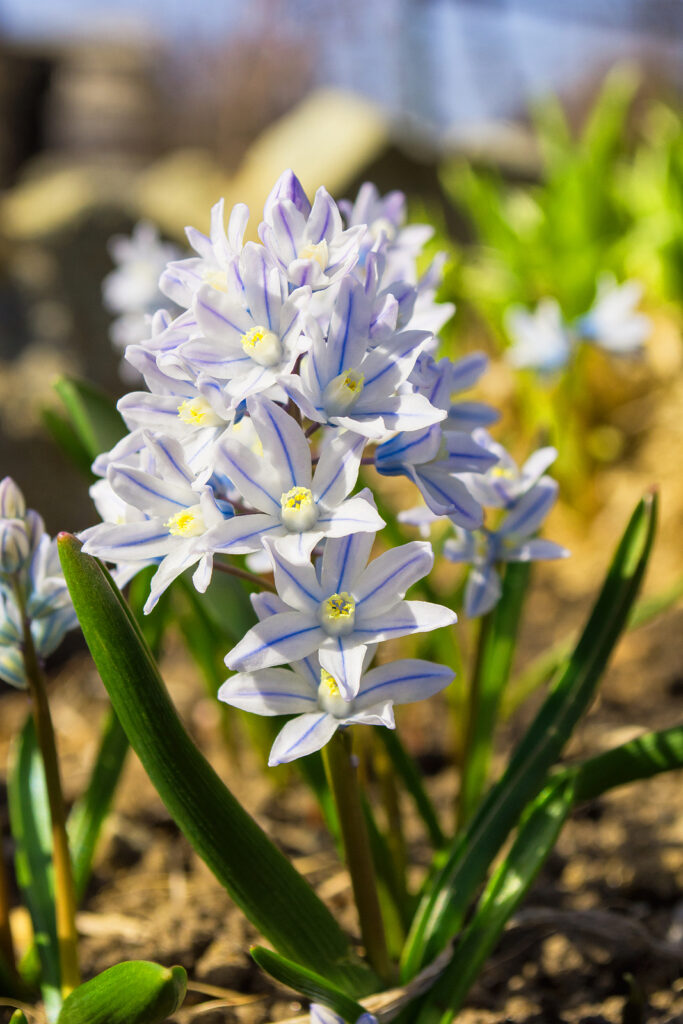Puschkinia — commonly called striped squill–is grown for its small, densely packed racemes of bell-shaped, pale blue flowers with darker blue stripes that appear in spring. Puschkinia is a genus of one species, but it is related and looks similar to Scilla and Chionodoxa.
Puschkinia flowers are borne on leafless stalks; each flower consists of six petal-like sepals. Plants bear basal, linear to strap-shaped leaves. Puschkinia grows from small tunicate bulbs.
Puschkinia is most effective planted in drifts of multiple bulbs or as a mass of blooms as a groundcover under deciduous trees.

Get to know Puschkinia
- Plant type: Bulb
- Growing zones and range: Zones 3 to 98
- Hardiness: Hardy to Zone 3
- Height and width: 8 inches (20cm) tall and wide
- Foliage: Strap-shaped bright green leaves are broad, upright, a little shorter than flower stems; 4-8 inches 10.2-20.3cm) stems.
- Flowers: Spikelike clusters of bell-shaped white or pale blue flowers with dark blue stripes.
- Uses: Naturalizing, rock gardens, or border edgings.
- Garden companions: Grape hyacinth (Muscari armeniacum)
- Common name: Striped squill
- Botanical name: Puschkinia
- Family name: Liliaceae
- Origin: Damp grasslands of the Middle East
Where to Plant Puschkinia
- Plant Puschkinia in full sun or light shade.
- Plant Puschkinia in well-drained, fertile soil.
When to plant Puschkinia
- Plant Puschkinia bulbs in fall.
Planting and spacing Puschkinia
- Plant Puschkinia 4 inches (10.2cm) deep.
- Space bulbs 8 inches (20cm) apart.
- For best effect, arrange Puschkinia bulbs in drifts—a plant or two here and there will be lost in the spring garden.
How to water and feed Puschkinia
- Puschkinia needs regular water during growth and bloom.
- Fertilize Puschkinia in spring with an organic bulb food.
How to care for Puschkinia
- A Puschkinia site that dries out in summer when plants are dormant is beneficial but not required.
Puschkinia pests and diseases
- Puschkinia can develop viruses.
- Puschkinia have few pest problems.

Puschkinia propagation
- Divide Puschkinia bulbs after blooming.
- Propagate Puschkinia by digging and dividing the clumps and/or separating the offsets and seedlings in early summer just as the foliage dies back.
Puschkinia varieties to grow
- Puschkinia scilloides, Striped squill, a 6-8 inches (15.2-20.3cm) tall species bearing erect racemes of 4 to 10 densely packed flowers in spring. Individual blooms are bell-shaped, .5 inch (1.3cm) wide, and very pale bluish-white in color with a darker stripe on each tepal.
- P. scilloides var. libanotica is usually not striped; prefers partial shade. Bears racemes of small .25-.4cm) wide white flowers that usually lack darker stripes and have pointed tepals. 6-8 inches (15.2-20.3cm) tall. Plant in autumn, placing 3-4 inches (7.6-10.2cm) deep. Will grow for years without disturbance. Needs very little water during the summer dormant period. Most effective in masses; a good choice for naturalizing. Zones 5 to 9.















